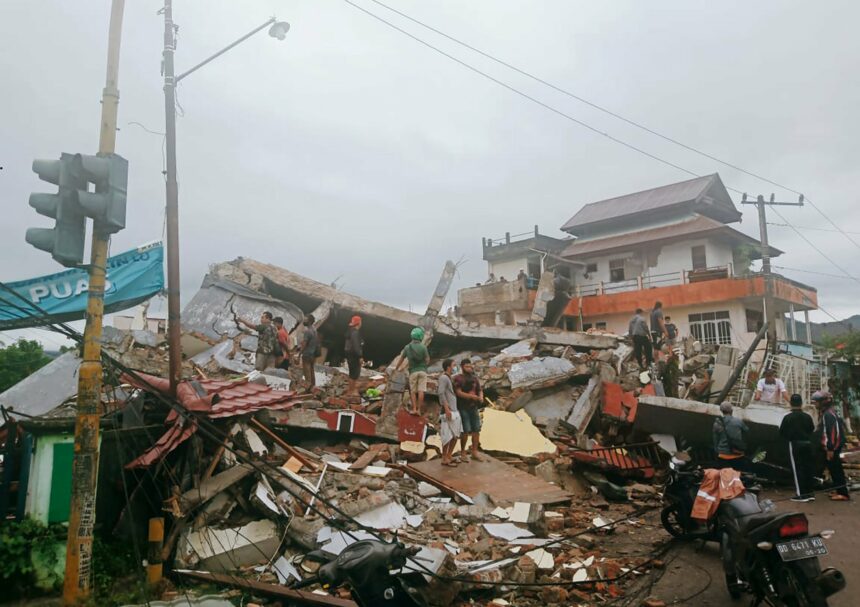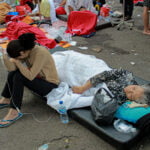Java, the largest island in Indonesia, was shaken by a shallow earthquake that killed dozens of people and injured hundreds more, raising concerns that the death toll would climb.
The magnitude 5.6 earthquake that occurred on Monday, according to the US Geological Survey, was located at a depth of 10 kilometers in the Cianjur district of West Java province (6.2 miles). People of the nation’s capital, Jakarta, fled to the streets in search of safety.
56 fatalities were caused by the earthquake, according to West Java Governor Ridwan Kamil. According to the National Disaster Mitigation Agency, there were about 700 injuries.
“So many buildings crumbled and shattered,” Ridwan explained to journalists. “There are residents trapped in isolated places … so we are under the assumption that the number of injured and deaths will rise with time.”
Numerous structures, including a hospital, a governmental building, and a residential school for Muslims, were devastated.
According to Cianjur government official Herman Suherman, the Sayang hospital in his town lost power following the earthquake, preventing doctors from performing medical procedures on the injured.
Southeast of Jakarta, 75 km (35 miles) away, is Cianjur Town. Almost totally destroyed structures could be seen in Cianjur in footage from Metro TV as anxious locals crowded outside.
In the Greater Jakarta region, the earthquake was very felt. The capital’s high rises trembled, and several were rescued.
“The quake felt so strong. My colleagues and I decided to get out of our office on the ninth floor using the emergency stairs,” according to Vidi Primadhania, a worker in south Jakarta.
Muchlis reported feeling “a large tremor” and discovering damage to the walls and ceiling of his office building while he was in Cianjur at the time of the earthquake.
“I was shocked. I was worried there will be another quake”, Muchlis said to the media, adding that due to the powerful tremors, many people fled their homes.
In the case of aftershocks, Dwikorita Karnawati, the director of the meteorology and geophysics service BMKG, recommended people remain outside.
According to BMKG, there were 25 aftershocks felt in the two hours following the earthquake, and landslides were a possibility, particularly in the event of heavy rain.
“We call on people to stay outside the buildings for now as there might be potential aftershocks,” Karnawati breifed the media.
Even though the vast archipelago country is frequently shaken by earthquakes, Jakarta rarely experiences them.
The “Ring of Fire,” a ring of volcanoes and fault lines in the Pacific Basin, is where the nation of more than 270 million people is situated, and as a result, it frequently experiences earthquakes, volcanic eruptions, and tsunamis.
A magnitude 6.2 earthquake that struck West Sumatra province in February resulted in at least 25 fatalities and over 460 injuries. A magnitude 6.2 earthquake that struck West Sulawesi province in January 2021 resulted in more than 100 fatalities and approximately 6,500 injuries.
In 2004, a devastating earthquake and tsunami in the Indian Ocean killed about 230,000 people in twelve different nations, the majority of them in Indonesia.












